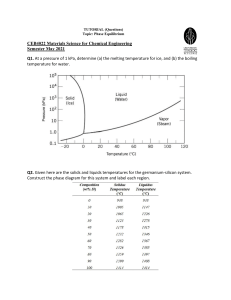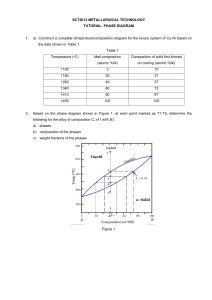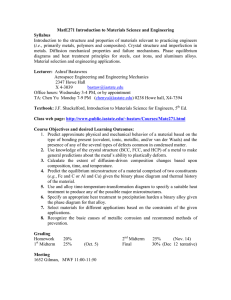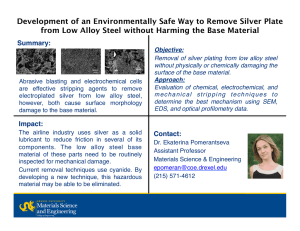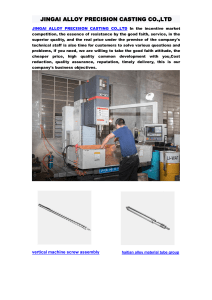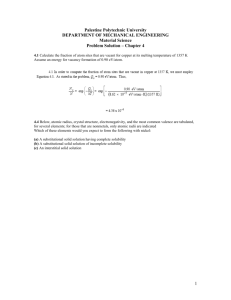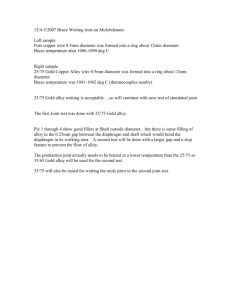Document 13554860
advertisement
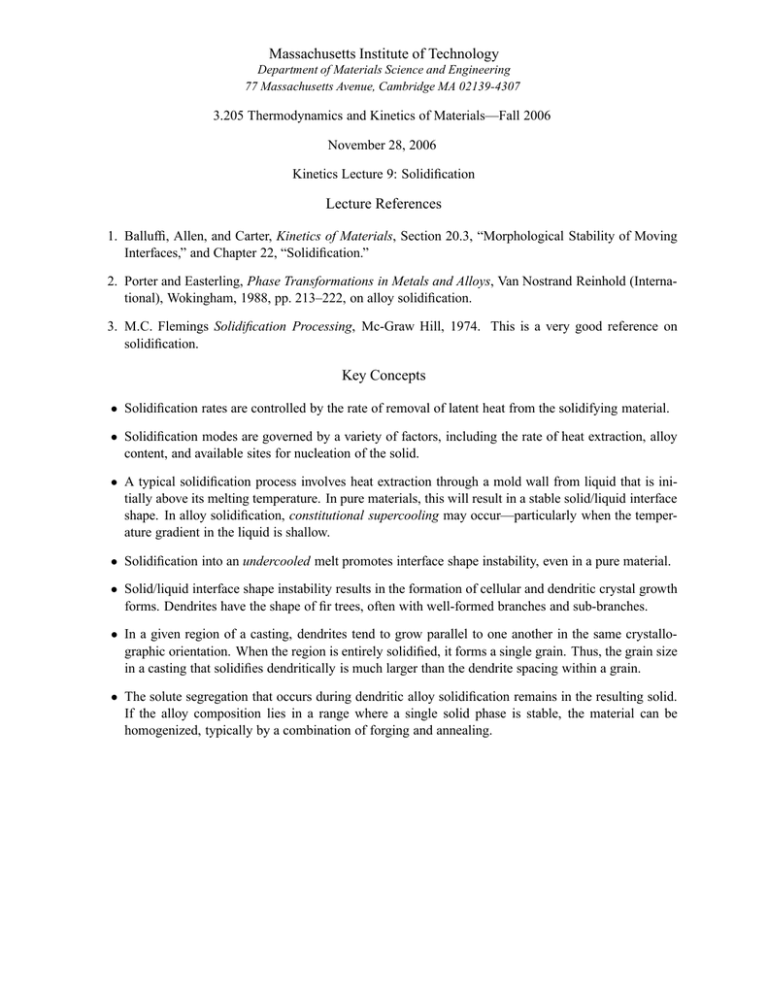
Massachusetts Institute of Technology Department of Materials Science and Engineering 77 Massachusetts Avenue, Cambridge MA 02139-4307 3.205 Thermodynamics and Kinetics of Materials—Fall 2006 November 28, 2006 Kinetics Lecture 9: Solidification Lecture References 1. Balluffi, Allen, and Carter, Kinetics of Materials, Section 20.3, “Morphological Stability of Moving Interfaces,” and Chapter 22, “Solidification.” 2. Porter and Easterling, Phase Transformations in Metals and Alloys, Van Nostrand Reinhold (Interna­ tional), Wokingham, 1988, pp. 213–222, on alloy solidification. 3. M.C. Flemings Solidification Processing, Mc-Graw Hill, 1974. This is a very good reference on solidification. Key Concepts • Solidification rates are controlled by the rate of removal of latent heat from the solidifying material. • Solidification modes are governed by a variety of factors, including the rate of heat extraction, alloy content, and available sites for nucleation of the solid. • A typical solidification process involves heat extraction through a mold wall from liquid that is ini­ tially above its melting temperature. In pure materials, this will result in a stable solid/liquid interface shape. In alloy solidification, constitutional supercooling may occur—particularly when the temper­ ature gradient in the liquid is shallow. • Solidification into an undercooled melt promotes interface shape instability, even in a pure material. • Solid/liquid interface shape instability results in the formation of cellular and dendritic crystal growth forms. Dendrites have the shape of fir trees, often with well-formed branches and sub-branches. • In a given region of a casting, dendrites tend to grow parallel to one another in the same crystallo­ graphic orientation. When the region is entirely solidified, it forms a single grain. Thus, the grain size in a casting that solidifies dendritically is much larger than the dendrite spacing within a grain. • The solute segregation that occurs during dendritic alloy solidification remains in the resulting solid. If the alloy composition lies in a range where a single solid phase is stable, the material can be homogenized, typically by a combination of forging and annealing.

